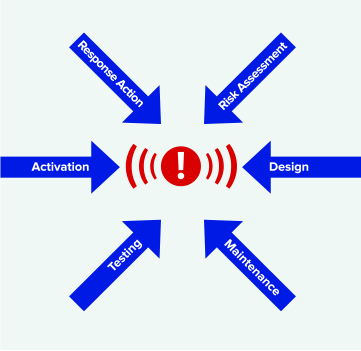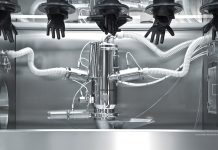The 2015 Control of Major Accident Hazards (COMAH) Regulations require that hazardous sites demonstrate within the COMAH Safety Report that risk management is integrated into all their activities, and the focus of the regulator on the right balance between human management systems and physical control barriers is more concentrated than ever before.
How this can be achieved might seem unclear considering how the key themes required of the Safety Report, for example safety management systems, risk assessment and the demonstration of safe design, seem to lend themselves exclusively to either a human or physical approach to management. So how can it be ensured that the COMAH Safety Report is integrated?
The key themes might seem autonomous, but by considering the how and why behind the human and physical risk management systems on a site, the links can be established. An example of this in the Safety Report is in the demonstration of safe design. The demonstration sets out all of the key risk control measures in place on site to prevent, control or mitigate a major accident hazard. By nature, these controls are all safety critical. However, it is easy to forget that behind every safety critical measure is a safety critical task, whether operational or related to maintenance. These are tasks that have direct contact with a major accident hazard, to be carried out by the operator or technician in order to ensure the ongoing effectiveness of the control barrier.
Take an alarm system. This is a physical barrier to a major accident, yet this measure would be ineffective without the controlled human input into risk assessment, design, maintenance, testing and the response action by trained and competent personnel. Control of these tasks is through a network of subsystems held within the safety management system, such as procedures, standards and competence management. The control of safety critical activities is imperative to the success of the onsite arrangements for major accident hazard management, and the programme of maintenance of these systems should therefore be regarded as equal to those in place for the physical systems that they enable.
The physical control barriers cannot be sustained without the human influence of the safety management system, and the safety management system cannot manage risk alone where there are no physical control barriers in place. The same goes for emergency response – both the strategy and resource are interdependent and should be organised and maintained in tandem. Response is also reliant on those measures in the ALARP demonstration and the cycle goes on.
In recent times, this kind of thinking has been facilitated by the increasing focus of the regulator on human factors. By considering the influencing factors that the environment, organisation, and operator/technician behaviour and characteristics might have on a task, and incorporating these considerations into the management system, additional layers of protection are created. With more joined up thinking and systematic consideration of the how and the why, the links between the separate themes within the COMAH Regulations are established and the requirements for a holistic and integrated Safety Report met.
By Carolyn Nicholls
and Jenny Hill
Carolyn.Nicholls@ras.ltd.uk














